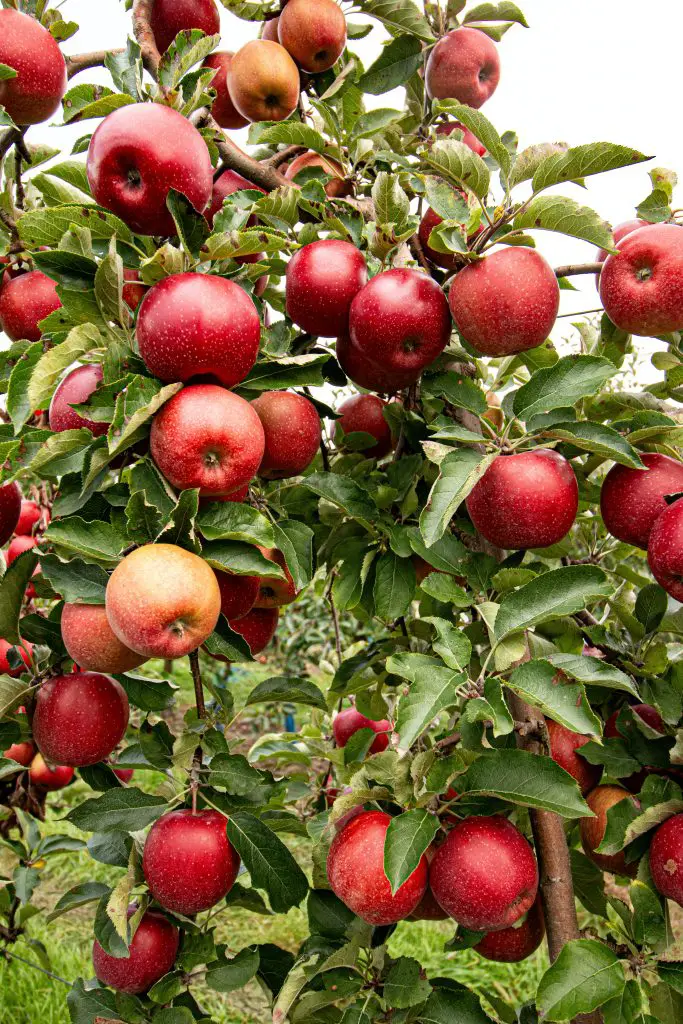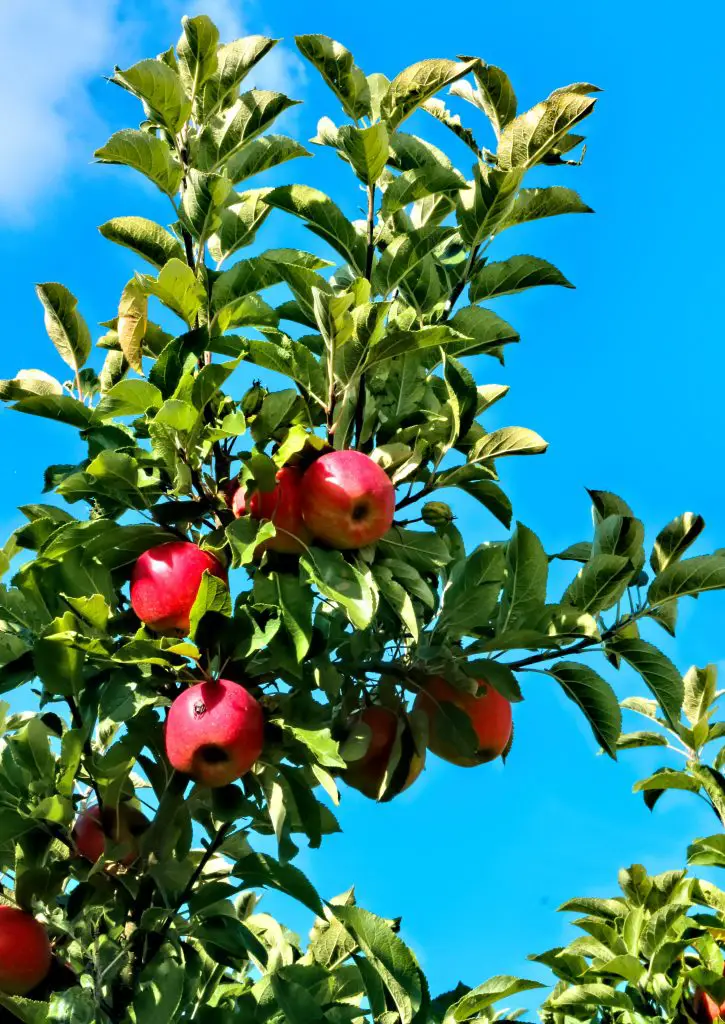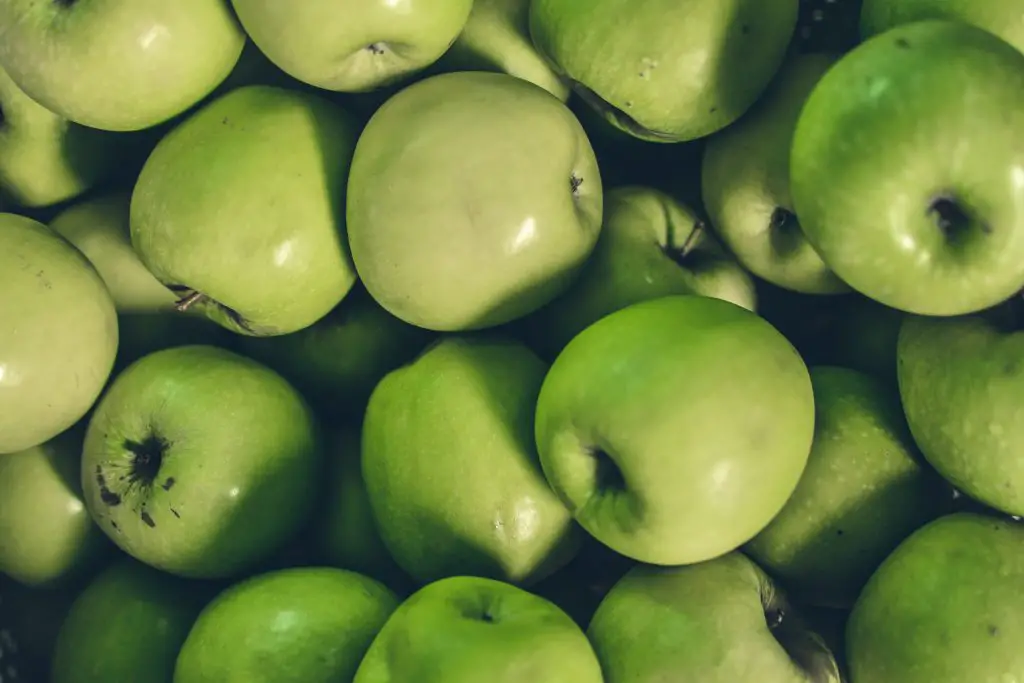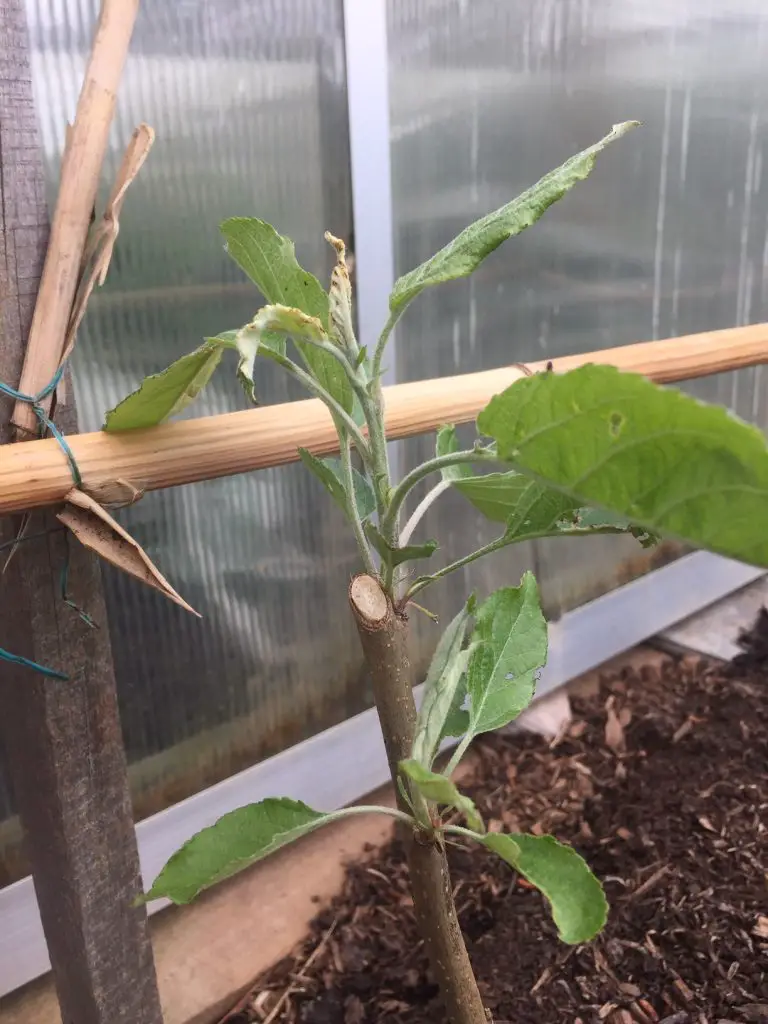Why Do Apple Seeds Grow Different Apples? There are more than 7,500 known cultivars of Apples. This broad range of varieties arises from the need of Apples to cross pollinate in order to produce fruit and seed. Each of these genetic crosses produces a unique set of genes, giving rise to a broad range of cultivars. This means that the quality of the Apple grown from seed is impossible to predict, as it will inevitably be different to its parents.
To ensure fruit with the desired properties is produced from a tree, a segment of a limb with desirable properties is grafted onto a suitable root stock. The grafted part of the tree produces fruit that is genetically identical to the tree that it came from, which means that all the Apples of a given variety will have originated from cuttings, taken from a single tree.
In most cases the original tree has long disappeared, however, in the case of the Bramley Apple, a well known commercial variety, the original tree still survives. It was planted in Nottingham Shire by a young girl in 1809, at the rear of a domestic property.

Many of the most common varieties we take for granted today were created by chance. Another example of this, is the Granny Smith Cultivar, which originated in Sydney in 1868. According to legend Maria Smith (‘Granny Smith’) had been testing French crab-apples for cooking, and, throwing the Apple cores out her window as she worked.
The seeds within the Apple Cores produced a new cultivar that was good for cooking and for general consumption. She took a stall at Sydney’s George Street Market, where she sold the Apples that became popular, due to their flavour and long storage life.
Growing Apples In Your Backyard
If your are wanting to grow Apples in your yard, the simplest way is to buy an Apple Tree. As mentioned above, planting seeds can not be relied upon to produce a suitable fruiting variety. When selecting a variety, it is important to recognise that it is necessary to plant at least 2 Trees to ensure cross pollination occurs in most cases. Without the second tree, you cannot guarantee your tree will produce fruit.
However, if there is another Apple Tree on a neighboring property, it is possible that fruit may be produced. The probability of pollination will reduce with the distance between trees. Additionally, the Apple Tree also needs to be of the right variety to allow cross pollination.

When selecting the variety of trees to plant, it is necessary to select varieties that have overlapping flowering periods. This is critical, as the pollen from each tree needs to be available at the same time for fertilisation of the other tree. The tags on most trees will contain a list of other varieties that are suitable as a cross pollinator.
The varieties of Apples are generally classed as Early, Mid or Late varieties. The early varieties are generally most suitable as cooking Apples and generally do not store well. The later varieties, such as Granny Smith, are referred to as eating varieties and will store for an extended period in cool, dark conditions.
The fruiting period varies from August (February in the Southern Hemisphere) for Early varieties to November (May in the Southern Hemisphere) for Later varieties.
When selecting varieties it is best to select either both Early or both Late varieties. However, Mid Season varieties such as Jonathan are recommended by many growers, as it will pollinate both Early and Late varieties. Additionally, this particular variety is said to be partially self fertile.
A wide selection of Apple trees is available online through yougarden.com.

How To Fit Many Apple Trees Into A Small Space
With the size of gardens, in many parts of the world reducing, space is often a problem. However, it is not necessary to have a full sized Apple Tree in your garden taking up large volumes of space. Step Over or Espalier Apple Trees that take up very little space, may be included in your garden. These Trees will often produce similar sized harvests to full grown trees, because they are easier to cover with netting to protect the fruit from birds. Additionally, all the fruit is easily accessible for picking.
Step Over Apples are Apple Trees that are trimmed to a height of 30 to 40 cm (12 to 16 inches), so that you can literally Step Over them. They are often placed at the edge of a garden bed, an example of this is shown in the image below.

To create a Step Over Apple it is a relatively simple process, however, you do need to construct a support structure. This is required to train the tree in the initial stages, as the branches need to be tied down. The support structure may be as simple as a couple stakes with a cross piece set at the desired height of the step over. The cross piece could be another Stake, a piece of Bamboo or even a piece of Wire.
The height of the Step Over Tree is typically 30 cm (12 inches) however, it can be lower or higher. The only limiting factor is the height of the graft in the tree itself, as you require at least some portion of the Scion above the graft, to be present.
When creating a Step Over Apple it is best to start with a bare rooted tree, as they are generally cheaper than potted trees and easier to work with, because they are smaller. Bared rooted trees are available in Winter and will reduce in price towards the end of Winter, as stores try to clear any excess stock.
Start by planting the tree in the center of the support structure. Once planted, prune the leader of the tree to the height of the support structure. Don’t worry if that means that you are cutting large volumes of growth off the tree, it will respond within a few weeks with rapid growth.
The prune will usually result in the tree producing three new branches. These new branches should be tied down onto the structure to create the horizontal tier. The tree, over time, will attempt to sprout branches that go skyward, these branches should be removed on a regular basis, to ensure the desired height of the tree is maintained. In the growing season, pruning will be required every 6 weeks to 2 months.
When removing the branches it is best to leave a stub that is between 2 to 5 cm (1 to 2 inches) long. This will encourage the formation of spurs to maximise fruit production.
The other space saving option is to create an Espalier Tree, which are trees pruned to created a two dimensional shape. Espalier Trees are created in a similar way to Step Over Apples, except that there are multiple tiers created. This is useful if you have wall space within your garden you want to cover, or you may want to create a partition within your garden by using an Espalier Tree.
The Espalier Trees start out in the same way as a Step Over Tree with a bare rooted tree pruned to the height of the first tier. The subsequent growth is tied down to the support structure to create the first tier, however, at this stage the leader is not pruned.

The following Winter, the leader is pruned at the desired height of the next tier, which are typically spaced 30cm (12 inches) apart. The new growth created is then tied down to create the next tier and the process is repeated each year, until the desired height is reached. To learn more about how to Espalier Trees, click here.
How To Get Fruit For Only One Apple Tree
The other option to minimise space, is to create an Apple Tree with more than one species grafted onto the tree. This will allow the tree to be self pollinating, if appropriate varieties are chosen.
While it is possible to buy multiple grafted trees they are relatively rare and there is a limited choice of varieties. As such, you may consider completing your own graft. It is also important to note, that there is no limit on the number of varieties you can graft onto a single tree. I have seen trees with over 40 different varieties, grafted onto the one tree.
For more information on how to graft Apple Trees, watch the video below.
